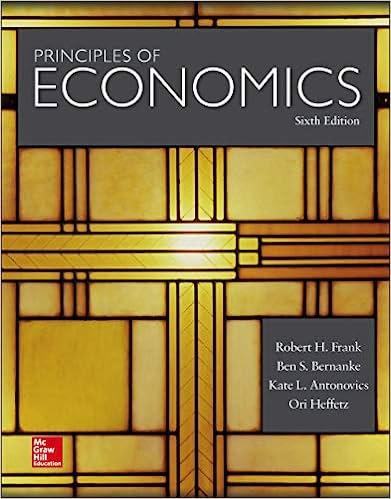Question
I then said this to the Congress: But the very vigor of the recovery in both durable goods and consumers' goods brought into the picture
I then said this to the Congress:
"But the very vigor of the recovery in both durable goods and consumers' goods brought into the picture early in 1937 certain highly undesirable practices, which were in large part responsible for the economic decline which began in the later months of that year. Again production outran the ability to buy.
"There were many reasons for this overproduction. One was fearfear of war abroad, fear of inflation, fear of nationwide strikes. None of these fears has been borne out.
". . . Production in many important lines of goods outran the ability of the public to purchase them. For example, through the winter and spring of 1937 cotton factories in hundreds of cases were running on a three-shift basis, piling up cotton goods in the factory and in the hands of middle men and retailers. For example, also, automobile manufacturers not only turned out a normal increase of finished cars, but encouraged the normal increase to run into abnormal figures, using every known method to push their sales. This meant, of course, that the steel mills of the Nation ran on a twenty-four hour basis, and the tire companies and cotton factories speeded up to meet the same type of abnormally stimulated demand. The buying power of the Nation lagged behind.
"Thus by the autumn of 1937 the Nation again had stocks on hand which the consuming public could not buy because the purchasing power of the consuming public had not kept pace with the production.
"During the same period the prices of many vital products had risen faster than was warranted. . . . In the case of many commodities the price to the consumer was raised well above the inflationary boom prices of 1929. In many lines of goods and materials, prices got so high that buyers and builders ceased to buy or to build.
". . . The economic process of getting out the raw materials, putting them through the manufacturing and finishing processes, selling them to the retailers, selling them to the consumer, and finally using them got completely out of balance.
1.Using the terminology of the fixed-price Keynesian model to summarize the arguments made in paragraphs 9-14("I then said this to the Congress:....), which statement best expresses Roosevelt's ideas?
a. In 1938the economy was below equilibrium so output increased.
b. By 1938output had exceeded aggregate expenditures so inventories were rising and output declined.
c. inventories were falling in 1938so that real GDP increased.
d. In 1938the economy was in equilibrium where output =spending.
e. By 1938 it was clear that the Great Depression was ending.
Step by Step Solution
There are 3 Steps involved in it
Step: 1

Get Instant Access to Expert-Tailored Solutions
See step-by-step solutions with expert insights and AI powered tools for academic success
Step: 2

Step: 3

Ace Your Homework with AI
Get the answers you need in no time with our AI-driven, step-by-step assistance
Get Started


